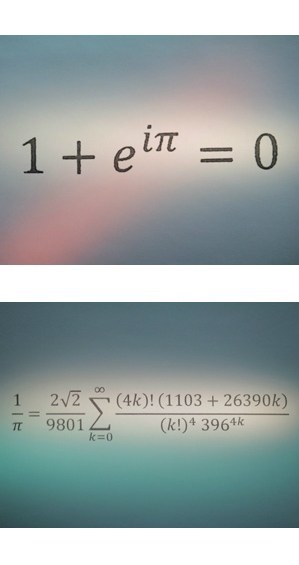Tuesday, 19 May 2020
Neural correlates of mathematical beauty

This week I’d like to tell you about a study published in 2014, entitled “The experience of mathematical beauty and its neural correlates”.
We know that mathematicians have long talked about experiencing genuine aesthetic pleasure at the sight of certain mathematical formulas. We also know from several brain-imaging studies that activation of field A1 of the medial orbito-frontal cortex (mOFC) is one of the most common neuronal correlates of the more conventional, sense-based experience of beauty (for example, in someone’s face, or in a landscape, or in a piece of music). Hence the authors of this study (neuroscientist Semir Zeki and his colleagues) decided to investigate whether the aesthetic pleasure that mathematicians derive from such a seemingly abstract source as a mathematical formula activates this same area in their brains. And the answer seems to be yes. …
To answer this question, Zeki and his team asked 15 mathematicians to study 60 different mathematical formulas and rate them on a scale from –5 (ugly) to +5 (beautiful) according to how beautiful they experienced them to be. Two weeks later, these mathematicians were brought into the lab and asked to rate these same equations again while undergoing brain scans by functional magnetic resonance imaging (fMRI).
The formulas rated among the most beautiful often included Leonhard Euler’s identity, the Pythagorean identity, and the Cauchy-Riemann equations. Euler’s identity (top image above) links 5 fundamental mathematical constants with 3 different arithmetic operations and is considered so beautiful that some have compared it with Hamlet’s soliloquy. At the other end of the spectrum, many of the mathematicians rated Riemann’s functional equation and Srinivasa Ramanujan’s infinite series (bottom image) as among the ugliest. Even to me, a non-mathematician, there’s something fundamentally repulsive about the latter.
Zeki and his team found not only that the mathematicians’ ratings were consistent between the first trial and the second, but also that the formulas that they rated most beautiful did indeed activate field A1 of their medial orbito-frontal cortex (which is also one of the many brain areas activated in the mystical experience of meditation. Thus we see that human beings can experience aesthetic emotions in response not only to things like paintings or music, but also to things that are supposedly cold and abstract, such as mathematical formulas.
Pleasure and Pain | No comments







